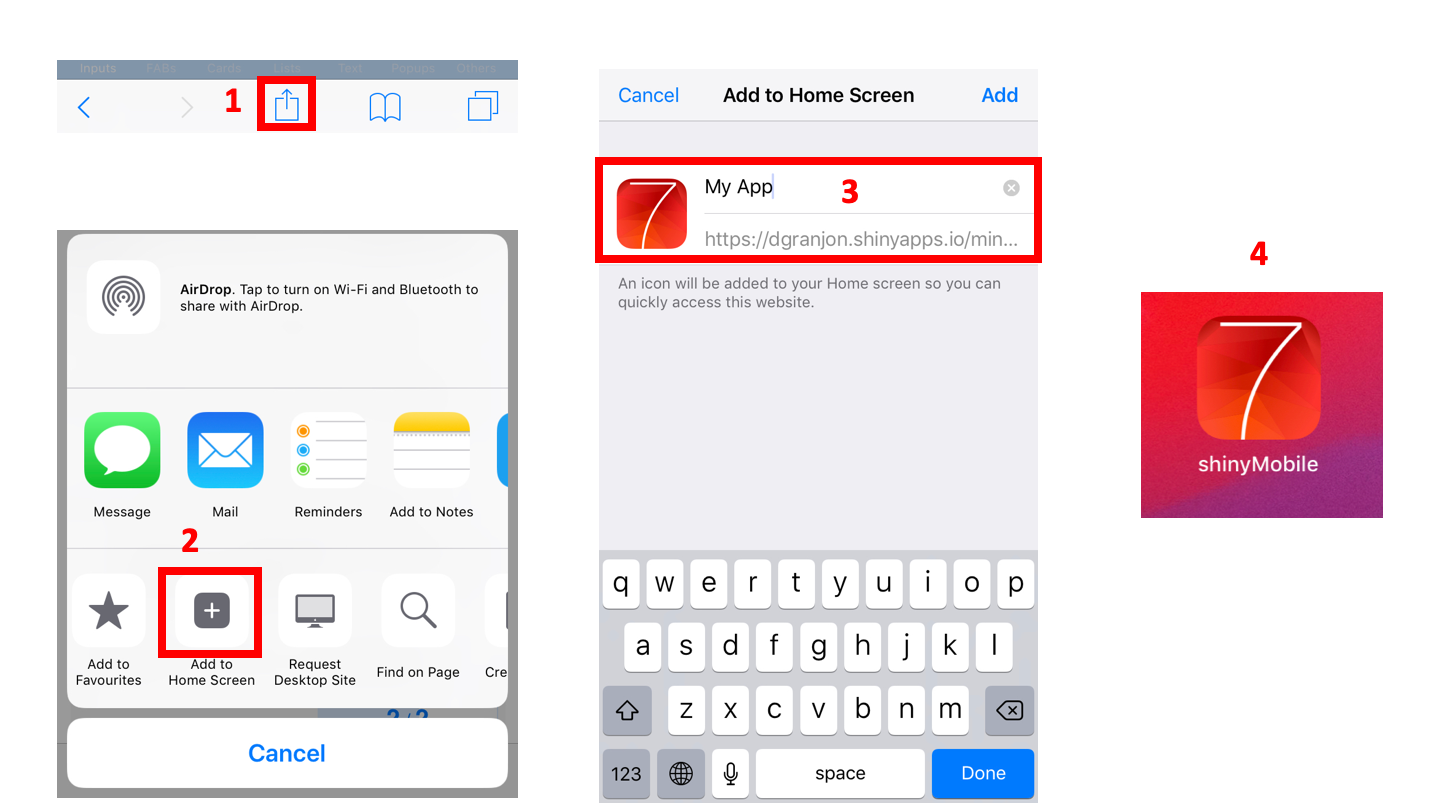shiny API for Framework7 (IOS/android)
# for the latest version
devtools::install_github("RinteRface/shinyMobile")A running demo is on shinyapps.io. Left side: android demo, right side: iOS demo
shinyMobile is PWA capable, meaning that it can be displayed full screen on many mobile
devices. This feature is automatically handled by f7Page():
shiny::tags$meta(name = "apple-mobile-web-app-capable", content = "yes"),
shiny::tags$meta(name = "theme-color", content = "#2196f3"),
shiny::tags$meta(name = "apple-mobile-web-app-status-bar-style", content="black-translucent"),
shiny::tags$link(rel = "apple-touch-icon", href = "icons/apple-touch-icon.png"),
shiny::tags$link(rel = "icon", href = "icons/favicon.png"),
shiny::tags$link(rel = "manifest", href = "manifest.json"),However to access launch icons and splatch screens, you must create a manifest.json file and an icon asset folder in the www folder of your app: more here.
The manifest.json file could be like:
{
"name": "My App",
"short_name": "My App",
"description": "My App",
"lang": "en-US",
"start_url": "https://dgranjon.shinyapps.io/miniUI2Demo/",
"display": "standalone",
"icons": [
{
"src": "icons/128x128.png",
"sizes": "128x128",
"type": "image/png"
},
{
"src": "icons/144x144.png",
"sizes": "144x144",
"type": "image/png"
},
{
"src": "icons/152x152.png",
"sizes": "152x152",
"type": "image/png"
},
{
"src": "icons/192x192.png",
"sizes": "192x192",
"type": "image/png"
},
{
"src": "icons/256x256.png",
"sizes": "256x256",
"type": "image/png"
},
{
"src": "icons/512x512.png",
"sizes": "512x512",
"type": "image/png"
}
]
}Be sure to replace the start_url with your own url. Add also a custom name, even though this can be modified later when adding the PWA to your IOS apps.
Later, there will be a dedicated function that will create the manifest.json file as well as other necessary assets.
Go to the url of your app. In this example this is: https://dgranjon.shinyapps.io/miniUI2Demo/. It opens like a classic web app.
- Select the share button located in the bottom bar of your Iphone/Ipad.
- Click on "Add to Home Screen"
- Choose a relevant name and click on OK.
- The app will be added to your IOS Apps. In case you want custom icons, replace the content of the www folder with your own.


